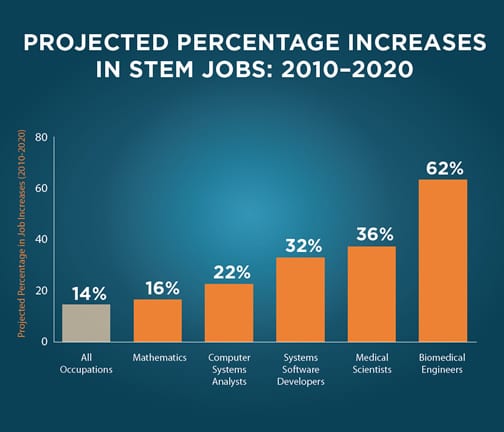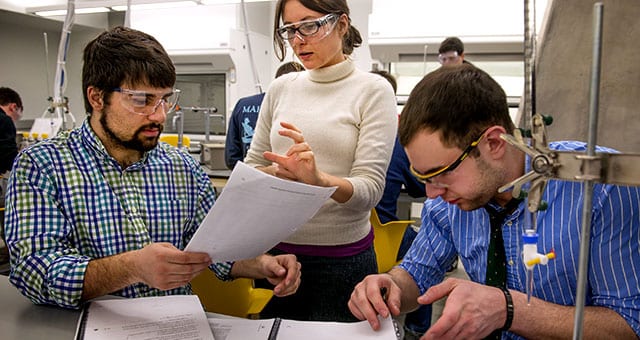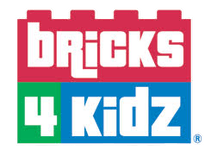STEM is one of the most talked-about buzzwords in education today. What’s muddying the waters is all this talk of STEM has migrated over to a marketing tactic. Just slap a “STEM” label on toy packaging and some will think their child is getting a brain boost; likewise, certain after-school activities may promote themselves as STEM-based to make themselves appear educational when they’re actually based on play.
First things first. What does STEM mean? It stands for science, technology, engineering and math. This concept started emerging around a decade ago to raise attention on the importance of giving all children an opportunity to have access to a quality education in each of the four disciplines. As we just discussed, STEM means different things to different people. But educators view these disciplines as integrated and related to one another. Science, technology, engineering and math are not practiced in the workplace as separate entities. A scientist may have to draw from technology and mathematics, and engineers perform plenty of calculations.
So why is STEM so important? The United States has a long tradition of being a leader in STEM-related innovation. But as we found a decade ago, we need to make sure our children’s education meets their future employers’ needs. Here’s a look at what’s happening and why it’s grown into a much talked-about concept.

STEM careers are on the grow
Demand for STEM jobs has grown by 10.5 percent (817,260 jobs) between 2009 and 2015, whereas the net growth for non-STEM occupations increased by 5.2 percent, according to the U.S. Bureau of Labor Statistics. Broken down, the gains were found in computer-related jobs, rising from 3.2 million to 3.9 million in that time period, and engineering, which increased by 100,000 jobs.
In the coming years, that growth is only expected to continue. There will be 500,000 new computer occupations added between the years 2014-2024, a 12.5 percent increase. If you factor in the number of people leaving these jobs during those years, the increase is actually closer to 1 million. Engineering will see 65,000 new jobs; however, with departures factored in, that comes to more than half a million.
STEM careers pay better than average
The other upside to pursuing STEM is these are the jobs that can mean solid career prospects that offer financial security for your child. According to the Bureau of Labor Statistics, 93 out of 100 STEM jobs had wages well above the national average. The average salary for a STEM career is $87,570 while non-STEM occupations fetch a salary of $45,700.

But there’s still a struggle to attract students to STEM
One of the reasons educators are renewing the emphasis on STEM is lagging interest from students. Only 16 percent of high school students indicated in 2014 that they were interested in a STEM career and met the proficiency standards in mathematics, according to the U.S. Department of Education. More than one in four freshmen expressed an interest in STEM fields, but more than half are expected to abandon that idea by graduation.
Results from a different, more recent survey aren’t more promising. One in four boys are planning on a STEM career, a drop from 36 percent in 2017, according to a recent Ernst and Young survey. However, girls maintained the same level of interest, at a mere 11 percent.

WASHINGTON, DC – FEBRUARY 26: Teaching assistant Camille Lombard (C) with students Bijan Ameli (L) and Mike Feigenbaum (R) in a non-science major chemistry class at George Washington University’s new science and engineering research center in Washington, DC on February, 26, 2015. The center is part of a bid to make a school known for public policy and social sciences more of a hard-science research powerhouse. Research topics include 3/D printing of human organs, fossils, wearable medical devices, earthquake-resistant highway materials, and more. (Photo by Linda Davidson / The Washington Post via Getty Images)
Move on to the career level, and only one-third of college graduates have earned a degree in a STEM field, according to Pew Research Center. What’s more, 63 percent of these degree holders say young people probably find that STEM subjects are too hard, while 12 percent thought these students were bored by STEM subjects.
How parents can lay a great foundation in STEM
Now that you have an overview on the important role that STEM subjects will play, there are plenty of resources out there to engage your child and build their knowledge. One place to start is right here with Bricks 4 Kidz. Our blog is filled with project ideas and insights so you have the tools and information to encourage your child to learn, build and explore through play-based, enriching activities. And Bricks 4 Kidz programmes offer STEM-based camps and after-school programs that let kids expand their skill and knowledge through using LEGO Bricks building projects, robotics and video game design and coding. Find a Bricks 4 Kidz programme in your community and sign up your child today.

